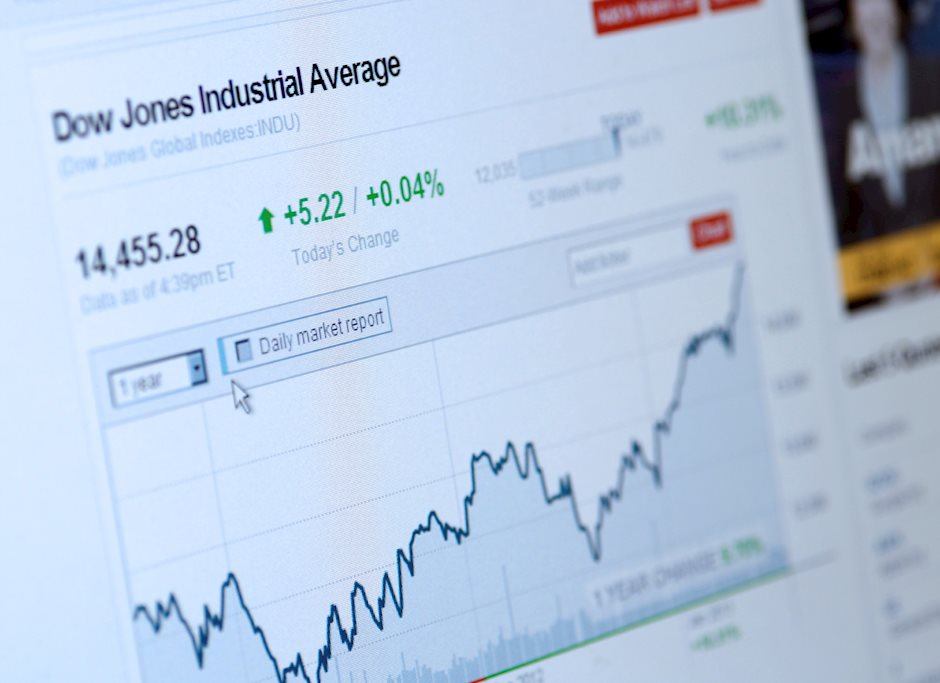Dow Jones Industrial Average hits fresh record peak before slumping back to the middle
- The Dow Jones clipped a new record high bid to round out the trading week.
- US PCE inflation held steady in July, teasing investors without giving further hope.
- Coming up next week: US long weekend, PMI figures, and another NFP print.

The Dow Jones Industrial Average (DJIA) tipped into a fresh record intraday high on Friday, echoing Monday’s record-setting bidding action. However, investors pulled back from the brink after US inflation data kept rate cut bets on the rails.
US Personal Consumption Expenditure Price Index (PCE) figures for July didn’t deliver any notable surprises to round out the trading week. MoM US core PCE inflation held steady at 0.2%, as expected, but the YoY core PCE inflation figure held steady at 2.5% versus the anticipated move up to 2.6%.
Rate markets are holding firmly to 30% odds of an initial double cut for 50 bps from the Federal Reserve (Fed) on September 18, with the remaining 70% leaning into a single quarter-point cut. Overall, rate traders are pricing in 100 bps in total cuts in 2024, according to CME’s FedWatch Tool.
With PCE inflation data out of the way and not giving any warning signs, the way is paved to next week’s Nonfarm Payrolls (NFP) print, one of the last key pieces of economic data standing in the way of the Fed and rate-cut-hungry markets. Next week will also open on a quiet note, with US exchanges slated to remain shuttered for the Labor Day holiday. Some Purchasing Managers Index (PMI) releases are also scattered throughout the trading week.
Dow Jones news
It’s been a mixed bag for the Dow Jones on Friday. Roughly half of the index’s constituent securities are in the green for the day, and the DJIA eked out a fresh all-time intraday high of 41,497 before easing back to the day’s opening bids. On the low end, Salesforce (CRM) backslid 1.8%, falling to $252.35 per share, while American Express (AXP) contracted a little over 1%, easing to $252.25.
On the high side, Intel (INTC) rallied over 9% at its peak, surging to its highest bids in nearly a month after rumors emerged the company is looking to pivot some of its core operations into more profitable sectors.
Dow Jones price forecast
Bullish momentum continues to strain against its tether, keeping the Dow Jones testing new record highs and keeping price action pinned deep in bull country. The index is trading well north of the 200-day Exponential Moving Average (EMA) at 38,513, and the nearest technical floor in place to catch a downside correction is parked at the 50-day EMA just above the 40,000 major price handle.
The Dow Jones has climbed over 8% from August’s deep swing low to 38,382, touching new record highs twice in a single week. Despite closing in the green for three straight weeks, topside momentum is starting to wane, and bidders might want to watch out for a transitional period giving way to a fast drop that could gain speed as it kicks out near-term stops.
Dow Jones daily chart

Fed FAQs
Monetary policy in the US is shaped by the Federal Reserve (Fed). The Fed has two mandates: to achieve price stability and foster full employment. Its primary tool to achieve these goals is by adjusting interest rates. When prices are rising too quickly and inflation is above the Fed’s 2% target, it raises interest rates, increasing borrowing costs throughout the economy. This results in a stronger US Dollar (USD) as it makes the US a more attractive place for international investors to park their money. When inflation falls below 2% or the Unemployment Rate is too high, the Fed may lower interest rates to encourage borrowing, which weighs on the Greenback.
The Federal Reserve (Fed) holds eight policy meetings a year, where the Federal Open Market Committee (FOMC) assesses economic conditions and makes monetary policy decisions. The FOMC is attended by twelve Fed officials – the seven members of the Board of Governors, the president of the Federal Reserve Bank of New York, and four of the remaining eleven regional Reserve Bank presidents, who serve one-year terms on a rotating basis.
In extreme situations, the Federal Reserve may resort to a policy named Quantitative Easing (QE). QE is the process by which the Fed substantially increases the flow of credit in a stuck financial system. It is a non-standard policy measure used during crises or when inflation is extremely low. It was the Fed’s weapon of choice during the Great Financial Crisis in 2008. It involves the Fed printing more Dollars and using them to buy high grade bonds from financial institutions. QE usually weakens the US Dollar.
Quantitative tightening (QT) is the reverse process of QE, whereby the Federal Reserve stops buying bonds from financial institutions and does not reinvest the principal from the bonds it holds maturing, to purchase new bonds. It is usually positive for the value of the US Dollar.
Author

Joshua Gibson
FXStreet
Joshua joins the FXStreet team as an Economics and Finance double major from Vancouver Island University with twelve years' experience as an independent trader focusing on technical analysis.

















